Accelerate Success with AI-Powered Test Automation – Smarter, Faster, Flawless
Start free trialChatGPT has taken the world by storm. Everyone is talking about it, everyone wants to use it, and leverage it. Why? You can use it to write emails, stories, essays, and even code that would otherwise be time-consuming, giving you the bandwidth to channel your energy/talent/skills into other productive tasks. It is different from other chatbots because it understands human intent and provides answers accordingly. Scary to an extent, yet intriguing.
Audio Blog :
AI/ML has come a long way since its inception and is omnipresent in different fields like defense, medicine, engineering, software development, data analytics, etc.
As per the survey conducted by PwC, artificial intelligence adoption can potentially contribute approximately $15.7 trillion to the global economy by 2030. Software testing has wholeheartedly embraced AI/ML in its evolutionary journey. Today, software testing has almost reached a stage of autonomy with the infusion of AI/ML, resulting in reduced delivery cycle time and increased test efficacy, as evident in the following graph released by Gartner.
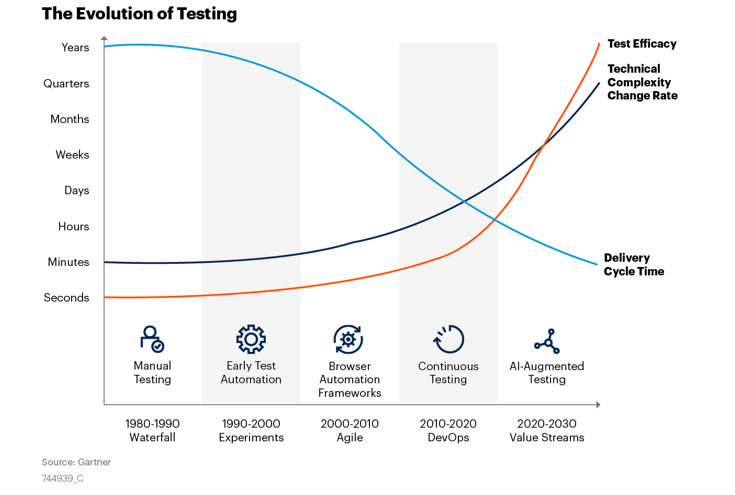
As per Gartner Inc., “By 2027, 80% of enterprises will have integrated artificial intelligence (AI)-augmented testing tools into their software engineering toolchain”.
The stakes are quite high and there is a huge demand for AI-augmented testing.
This article will talk about Autonomous testing in its current state and how it is beneficial for organizations.
Autonomous testing involves the creation of test suites, maintaining the tests, and test results analysis, without any human involvement.
Let us first understand the concept of autonomy.
Software testing Autonomy levels are modeled after the Society of Automotive Engineers (SAE International) model for autonomous (driverless) cars.
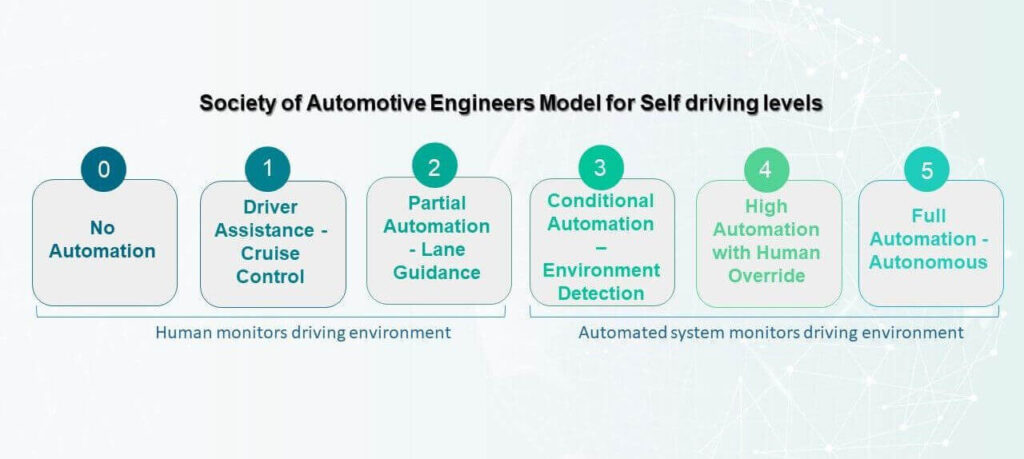
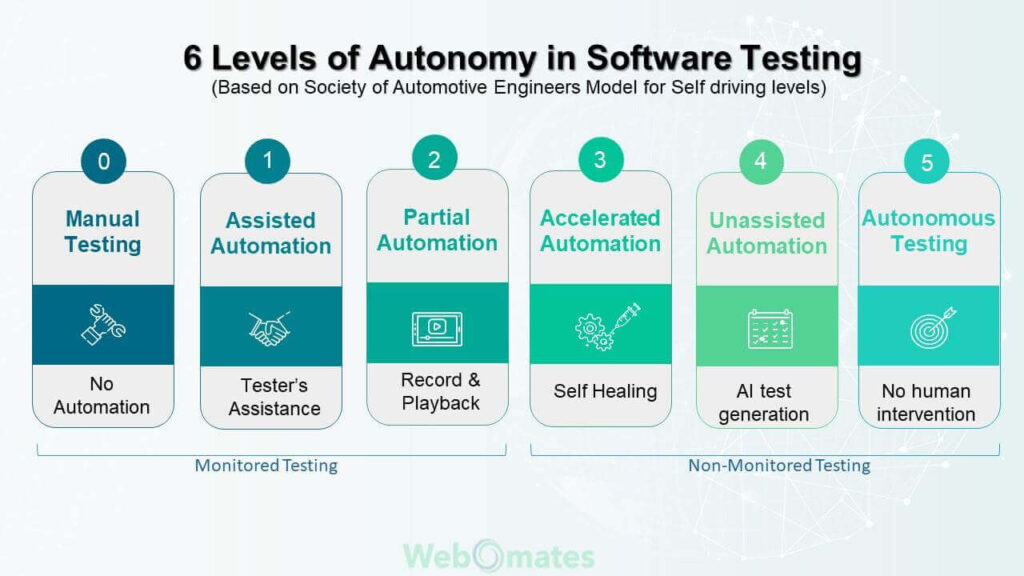
Level 0:
The degree of human involvement is very high in manual testing. No automation tools are used. The skills of the tester play a key role in the success of manual testing.
Level 1:
Assisted Automation requires the active involvement of the tester. However, some of the tasks like test execution are automated.
Level 2:
Partial Automation involves the usage of codeless testing tools by the tester to generate the test scripts.
Level 3:
Accelerated automation can also be called Self-healing test automation.
One of the major headaches in Automation testing is the test suite maintenance. The self-healing mechanism leverages the power of AI/ML to identify, rectify and execute the changed/updated test cases. Human involvement is limited to ensuring that testing is glitch-free, by providing logistic support like environment setup, etc.
Level 4:
This level gives further autonomy to software testing by using AI/ML for test suite generation and execution. Human involvement is limited to supervision and intervening if required.
Level 5:
Fully autonomous testing without any human intervention. It leverages the power of learning, predictive analysis, and adaptability of AI/ML based on past results to design/modify test strategies, execute, analyze, and generate reports.
Automate testing for your web application in THREE days. Start Free Trial NowBenefits of Autonomous Testing
Autonomous testing is the way forward to have accelerated high-quality releases with optimal use of resources, at reduced costs. Let us see how.
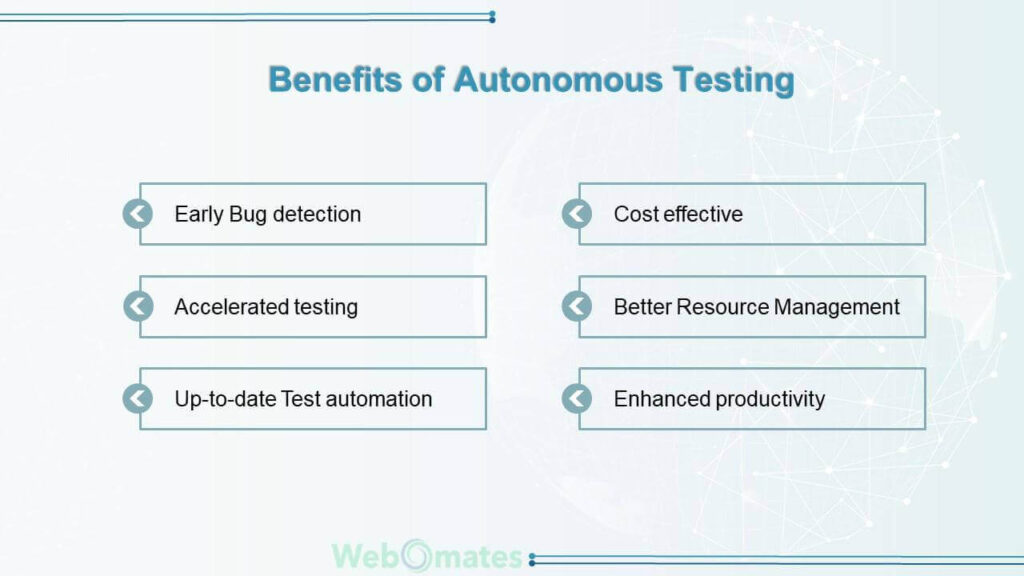
- Early Bug detection: Early bug detection reduces the risk of test failures.
- Accelerated testing: Autonomous test case generation, execution, self-healing, and test analysis expedites testing. All the changes are handled by the system itself making it much faster.
- Up-to-date Test automation: With a self-healing mechanism, the test scenarios and scripts are updated as and when needed. Self-adapting capabilities further evolve the system to create improved test scenarios.
- Cost-effective: Faster and more efficient testing reduces cost overheads.
- Better Resource Management: Human resources can be allocated as per their skillset since testing is no longer dependent on their expertise. They can focus on other productive work.
- Enhanced productivity: Increased productivity is a direct consequence of faster development, improved QA, faster time to market, and better resource management.

Measuring the success of Autonomous testing
There are a string of benefits associated with Autonomous testing, but how would you measure its success? It will take some time to come up with an industry-wide list, but certain common metrics can still help in measuring success. Of course, organizations can identify and use their metrics as per their internal process.
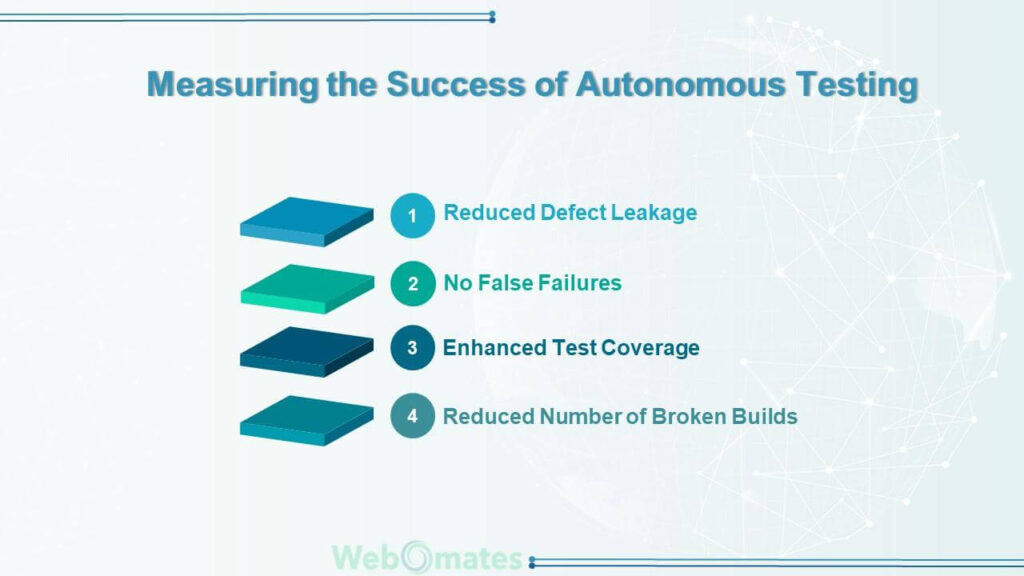
- Reduced Defect leakage:
Defect Leakage is the metric that is used to identify the efficiency of the QA testing i.e., how many defects are missed/slipped during the QA testing.
Reduced defect leakage is an indicator of a high-quality product.
- No False Failures
False failures are the bane of test automation leading to unnecessary delays. These are the cases when the test automation system should have been able to correctly identify whether it is a Pass or Fail. Instead, it is incorrectly specified as a Fail.
Autonomous testing leverages the power of AI/ML to correctly identify true pass or true fail, saving significant time.
- Enhanced Test Coverage
This metric can be a good measure when used in conjunction with other metrics since it will highlight how many tests were conducted, but not the accuracy.
- Reduced broken builds
It is an obvious and widely accepted metric. Lesser broken builds indicate higher quality and vice versa.
Stay ahead of the curve with Webomates AI testing services
There are several applications of AI/ML in software testing, but the key ones are test case generation and maintenance(self-healing).
Webomates’ AI engine can generate test cases and test scripts, and keep them up-to-date using AiHealing, saving thousands of man-hours.
We have got you covered for accelerated high-quality releases with our ingenious AI-based testing services. Let us explain how.
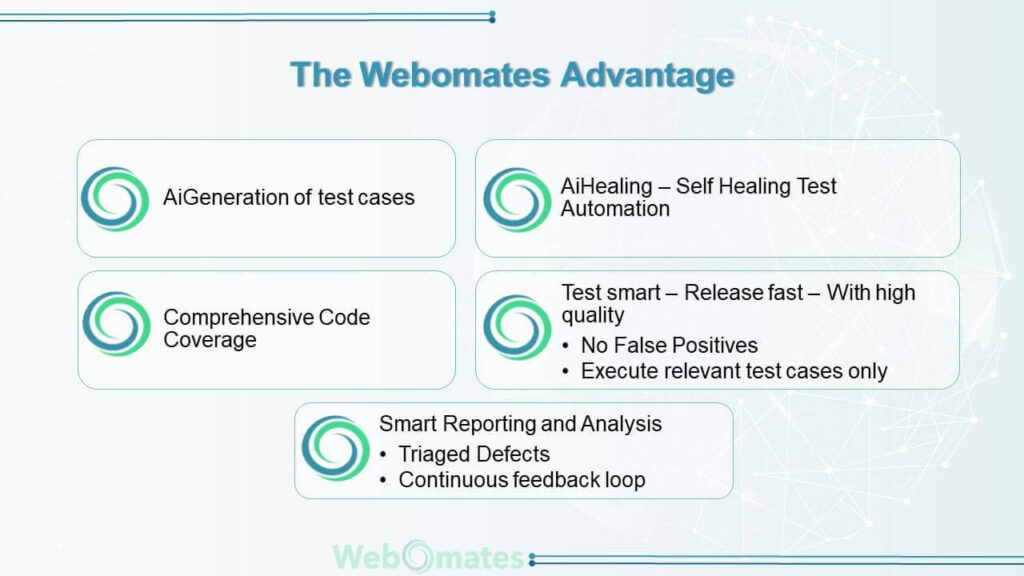
- AiGeneration of test cases
Our ingenious AI-based test engine covers all your bases and eliminates the possibility of missing any test case.
- AiHealing of test cases
Our patented AiHealing gives the developers a silver bullet with its self-healing capability. Your test cases are always up to date.
- Comprehensive code coverage:
We offer code coverage as an optional add-on to our AI-based test automation services. Click here to know how we do it.
- Test smart – Release fast – With high quality
- Automate and execute the right test cases with us.
- Eliminate false positives with help of our AI Defect Analyzer which can quickly identify and report False Positives and True Failures on any kind of application.
- Smart reporting and analysis
- Our exhaustive test failure analysis process generates a detailed report with triaged defects. This report is shared with the Dev and QA team via real-time alerts, aiding them in faster decision-making for bug fixes.
Partner with us to accelerate your QA. Drop a message at info@webomates.com and someone from our team will reach out to you.
If you liked this blog, then please like/follow us Webomates or Aseem.
Tags: AI based testing, AI Testing, Autonomous testing, Self healing, Test Automation

Leave a Reply